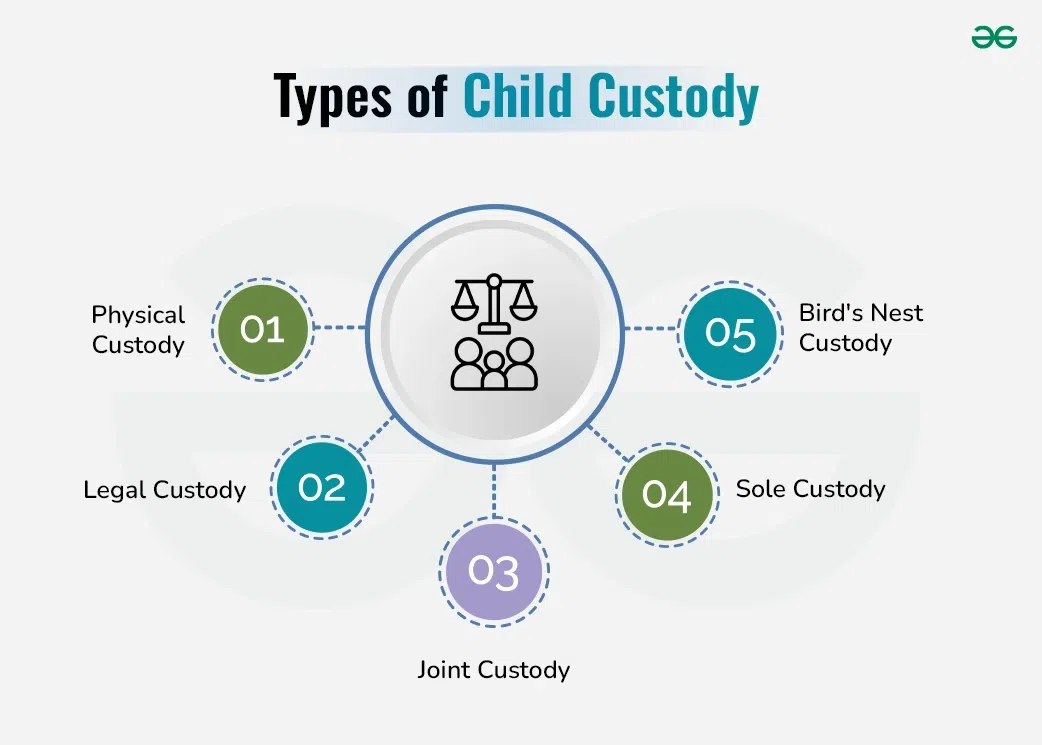Child custody arrangements are a central concern in divorce and separation cases involving children. Establishing a custody arrangement that serves the best interests of the child requires careful consideration of legal factors and adherence to best practices. This guide outlines the key legal considerations and offers practical tips for navigating child custody arrangements.

Types of Child Custody
Legal Custody vs. Physical Custody
Child custody is typically divided into two main categories:
Legal Custody
Legal custody refers to the right to make significant decisions about a child’s upbringing, including education, healthcare, and religious instruction. Parents with legal custody have the authority to make these important decisions on behalf of their child. Legal custody can be granted to one parent (sole legal custody) or both parents (joint legal custody).
Physical Custody
Physical custody involves where the child resides and who provides day-to-day care. Similar to legal custody, physical custody can be sole or joint. Sole physical custody means the child lives primarily with one parent, while joint physical custody means the child spends substantial time with both parents. The goal is to ensure that the child’s living arrangements support their emotional and developmental needs.
Joint Custody vs. Sole Custody
Joint Custody
Joint custody arrangements involve both parents sharing responsibilities and decision-making. This can include joint legal custody, joint physical custody, or both. Joint custody arrangements aim to foster continued involvement from both parents and provide a balanced environment for the child.
Sole Custody
Sole custody grants one parent full responsibility for making decisions and providing day-to-day care. The non-custodial parent may still have visitation rights but does not share in the primary decision-making or caregiving. Sole custody is often awarded in cases where it is determined that one parent is better suited to meet the child’s needs or if there are concerns about the other parent’s ability to provide appropriate care.
Factors Influencing Custody Decisions
Best Interests of the Child
Courts base custody decisions on the “best interests of the child” standard. This principle considers various factors to determine the arrangement that most benefits the child’s well-being. Key considerations include:
- Emotional Bond: The child’s relationship with each parent and their emotional needs.
- Stability: The ability of each parent to provide a stable and consistent environment.
- Parental Fitness: Each parent’s ability to provide for the child’s physical, emotional, and educational needs.
- Child’s Wishes: If the child is of sufficient age and maturity, their preferences may be considered.
- Co-Parenting Ability: Each parent’s willingness and ability to cooperate with the other parent in making decisions and supporting the child’s relationship with the other parent.
Domestic Violence and Safety Concerns
In cases involving domestic violence or safety concerns, custody arrangements prioritize the safety and well-being of the child. Courts may restrict or supervise visitation or deny custody to a parent if there are valid concerns about the child’s safety. Evidence of domestic violence, substance abuse, or neglect can significantly impact custody decisions.
Best Practices for Successful Custody Arrangements
Effective Communication
Open and effective communication between parents is crucial for successful co-parenting. Regularly discussing important decisions, sharing information about the child’s needs, and addressing concerns collaboratively can help maintain a positive co-parenting relationship. Using tools like co-parenting apps or communication platforms can facilitate better coordination.
Create a Detailed Parenting Plan
A comprehensive parenting plan outlines the custody arrangement, including details about visitation schedules, holidays, and special occasions. It should also address how decisions will be made and how disputes will be resolved. A well-structured parenting plan provides clarity and reduces conflicts between parents.
Prioritize the Child’s Needs
Always focus on what is best for the child, rather than personal grievances or conflicts with the other parent. Prioritizing the child’s emotional and developmental needs helps ensure that they have a stable and supportive environment. Being flexible and willing to adjust arrangements based on the child’s evolving needs is also important.
Seek Mediation or Professional Help
If parents have difficulty reaching an agreement on custody arrangements, mediation can be a valuable resource. A neutral mediator helps facilitate discussions and negotiate a mutually acceptable custody plan. Additionally, seeking the assistance of a family counselor or therapist can help address underlying issues and improve co-parenting dynamics.
Comply with Court Orders
Once a custody arrangement is established by the court, it is essential to comply with the court orders. Adhering to the agreed-upon schedule, respecting visitation rights, and fulfilling parental responsibilities help ensure a stable and consistent environment for the child. If modifications are needed, they should be requested through the proper legal channels.
Conclusion
Child custody arrangements involve important legal considerations and require careful planning to ensure the best interests of the child are met. By understanding the types of custody, factors influencing decisions, and best practices for co-parenting, parents can navigate custody arrangements more effectively. Open communication, detailed planning, and a focus on the child’s needs contribute to successful custody outcomes and a positive co-parenting experience.










